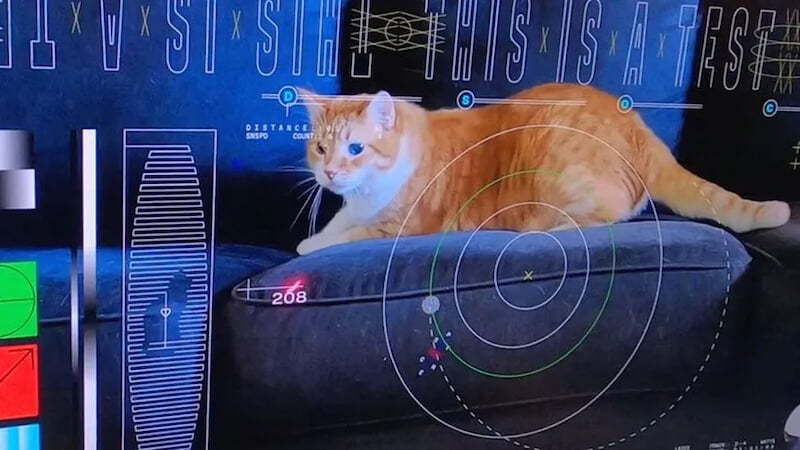
NASA recently tested a new transmission technology and streamed a cat video from space via laser. This could usher in the next stage of the Internet.
In the past few decades, humanity has reached several milestones. Among other things, the first people set foot on the moon and the Internet became socially acceptable. At the same time, some companies demonstrated that data transfer no longer necessarily has to be done via cable.
Starlink, for example, is a network of numerous satellites in orbit around the Earth that transport huge amounts of data every day.
NASA recently demonstrated the next step of the modern Internet. Because it introduced a new technology: the transmission of an ultra-high-resolution cat video from space back to Earth. The 15-second video was transmitted by a laser. The cat is, appropriately enough, chasing a laser beam.
NASA streams cat video from 30 million kilometers away
The video of the orange tabby cat traveled 30.6 million kilometers. That's about 80 times the distance from Earth to the Moon. NASA hopes the laser technology being tested will improve communications with more distant parts of the solar system. The candle, named Taters, remained on Earth during the transmission with its owner, an employee of NASA's Jet Propulsion Laboratory (JPL) in California.
NASA officials captured the video of a spacecraft lifting off from Kennedy Space Center in Florida on Oct. 13, 2023, on a SpaceX Falcon Heavy rocket. The stream occurred on December 11, 2023. A JPL employee subsequently confirmed that the data transfer was faster than a broadband Internet connection.
Future missions will require a fast and stable internet connection
The transmission was made using a link between the spacecraft and the Hale Telescope at Palomar Observatory. Staff there downloaded it and streamed it to JPL in real time. It became clear that the transmission between space and the telescope was faster than usual streams.
The video is part of NASA's Deep Space Optical Communications (DSOC) mission. It is the space agency's first mission to develop a fast and reliable interplanetary connection. The further missions go into space, the longer it takes to transmit content back to Earth.
Also interesting:
Source: https://www.basicthinking.de/blog/2023/12/20/nasa-katzenvideo/


